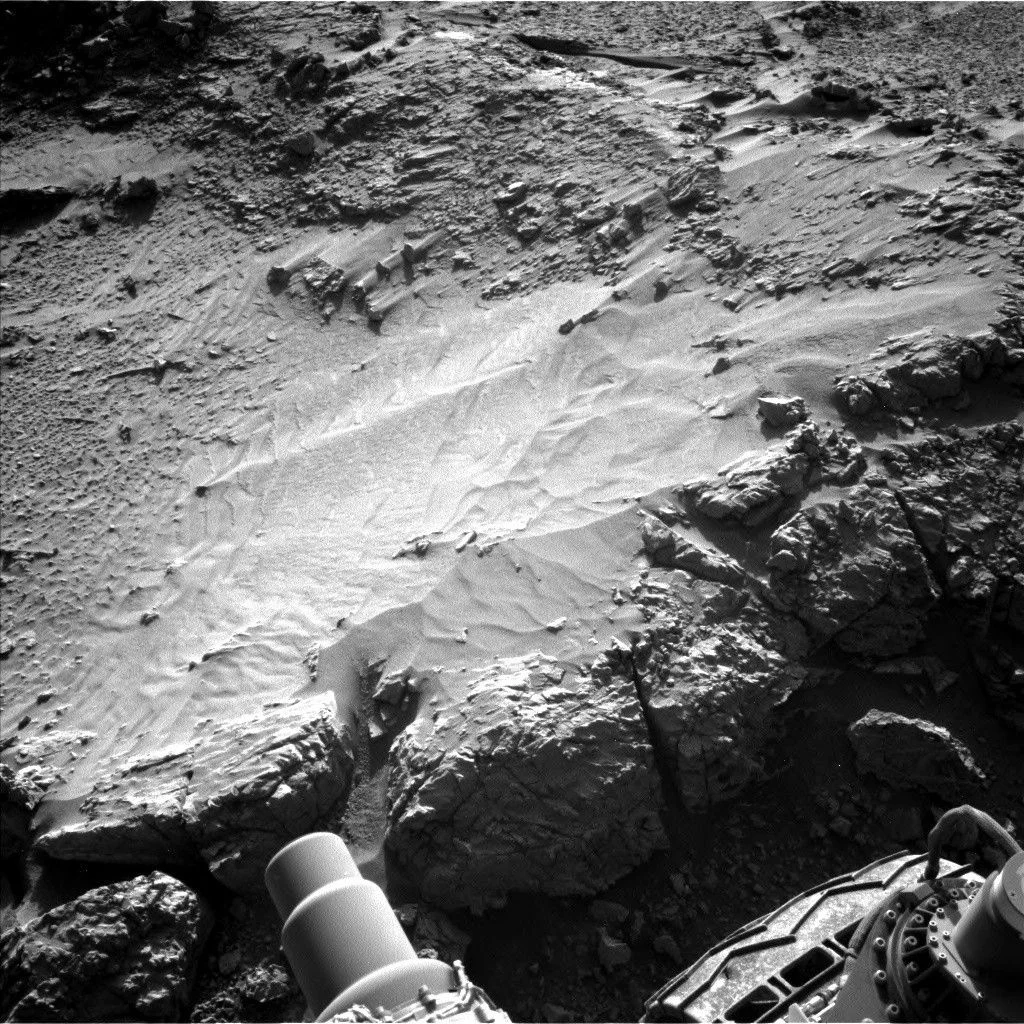
Mysterious ‘Stone Web’ on Mars Baffles Scientists, Rewriting Geological History?
NASA's Curiosity rover has stumbled upon a perplexing network of rock formations on Mars, resembling a delicate "stone web." This discovery, reminiscent of intricate boxwork structures, could revolutionize our understanding of the Red Planet's history and the potential for past habitability. Is this Martian marvel evidence of long-lost groundwater activity?
The intriguing find was initially identified in satellite imagery from the Mars Reconnaissance Orbiter back in 2006, but only now has Curiosity been able to examine the site up close in the Gale Crater region. According to Ashley Stroupe, Mission Operations Engineer at NASA’s Jet Propulsion Laboratory, the rover has arrived at a “potential boxwork structure,” a geological formation characterized by web-like ridges.
What is a Boxwork Structure? On Earth, boxwork structures typically form when mineral-rich groundwater deposits hard materials into fissures and fractures within rock formations. Over eons, the softer surrounding rock erodes, leaving behind a resilient lattice of mineral veins. The implication is that Mars may have once harbored much more extensive and persistent groundwater systems than previously believed.
Stuck on a Pebble: A Temporary Setback Curiosity's exploration faced a minor hurdle when one of its front wheels became perched on a small pebble. This precarious position initially prevented the deployment of its robotic arm for close-up analysis, forcing the team to rely on remote sensing techniques.
Remote Sensing to the Rescue Undeterred, the mission team leveraged Curiosity's powerful suite of instruments, including the Mastcam and ChemCam. Mastcam captured panoramic mosaics to map the surrounding terrain and document features like the "Temblor Range" and enigmatic troughs in the area. Simultaneously, ChemCam used its laser-induced breakdown spectroscopy (LIBS) to analyze the composition of "Glendale Peak," a key component of the potential boxwork structure. These analyses provided invaluable data on the chemical makeup and structural characteristics of these ridges, essential for reconstructing Mars’ geological timeline. "Glendale Peak" is to the right of the workspace, and RMI mosaic of Texoli butte was also captured.
Rover Maintenance and Repositioning Aside from its scientific endeavors, Curiosity underwent routine maintenance on its Heat Rejection System (HRS), which regulates internal temperatures using a fluid loop powered by the rover's radioisotope source. Following the remote sensing campaign, the rover was carefully repositioned, moving backward approximately 30 centimeters to dislodge the pebble and bring the rock formations within reach of its robotic arm. This repositioning opened the door for direct contact analysis using instruments such as APXS (Alpha Particle X-ray Spectrometer) and MAHLI (Mars Hand Lens Imager) - key for understanding the mineral content and confirming the boxwork formation, and ensuring a tactile understanding of the ridge materials.
Atmospheric Monitoring and Autonomous Targeting The mission also incorporates ongoing atmospheric science activities, including monitoring dust levels and searching for dust devils. Additionally, Curiosity utilizes its AEGIS autonomous targeting system to identify and analyze new ChemCam targets, maximizing scientific output even with communication delays.
Implications for the Search for Life The discovery of a potential boxwork formation holds profound implications for understanding Mars' past habitability. If confirmed, it would provide compelling evidence of persistent subsurface water, bolstering theories about the planet's potential to have once supported life. What secrets lie hidden within this "stone web," and what will Curiosity uncover next? Share your thoughts in the comments below!